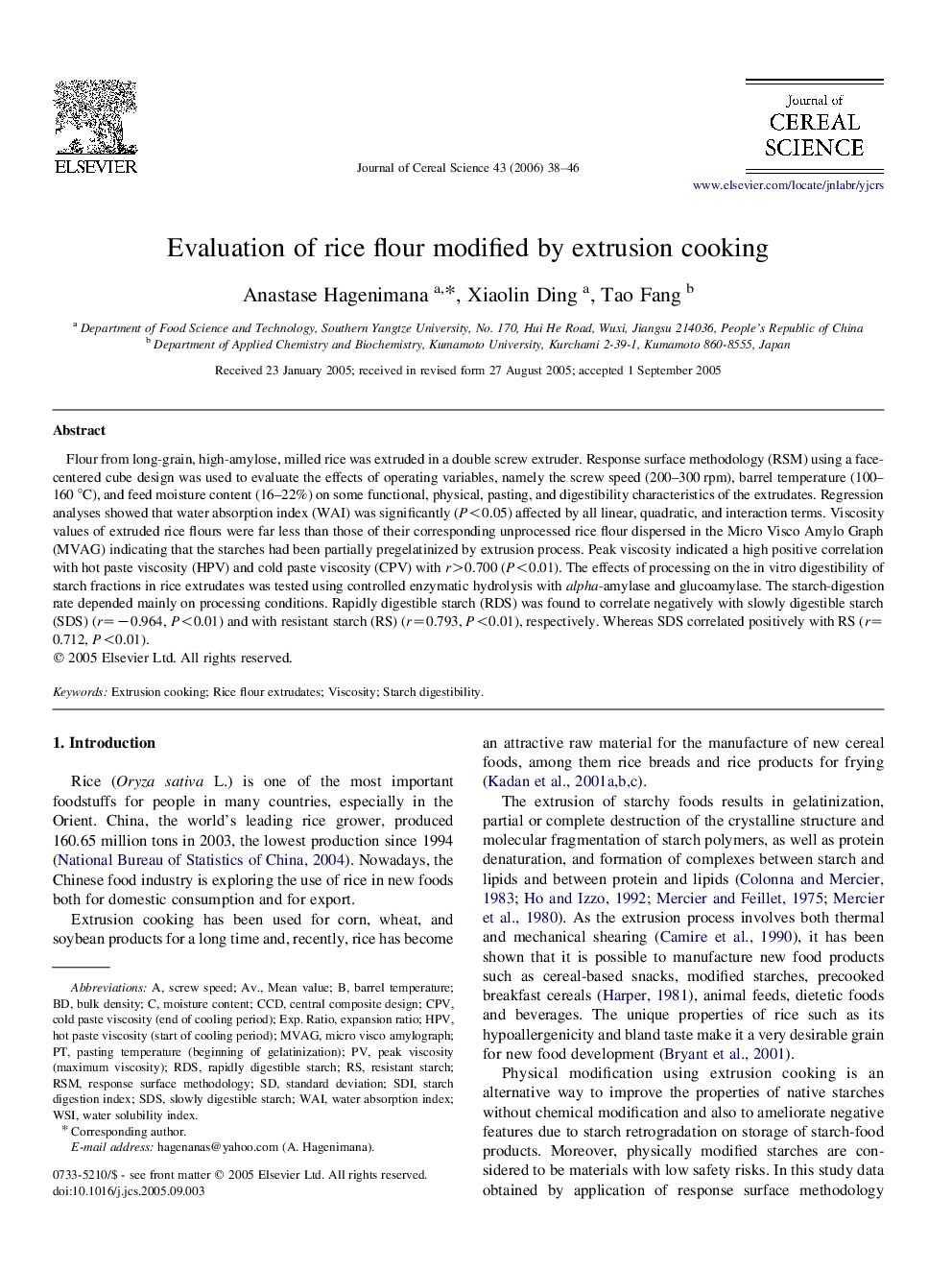| Article ID | Journal | Published Year | Pages | File Type |
|---|---|---|---|---|
| 4516877 | Journal of Cereal Science | 2006 | 9 Pages |
Flour from long-grain, high-amylose, milled rice was extruded in a double screw extruder. Response surface methodology (RSM) using a face-centered cube design was used to evaluate the effects of operating variables, namely the screw speed (200–300 rpm), barrel temperature (100–160 °C), and feed moisture content (16–22%) on some functional, physical, pasting, and digestibility characteristics of the extrudates. Regression analyses showed that water absorption index (WAI) was significantly (P<0.05) affected by all linear, quadratic, and interaction terms. Viscosity values of extruded rice flours were far less than those of their corresponding unprocessed rice flour dispersed in the Micro Visco Amylo Graph (MVAG) indicating that the starches had been partially pregelatinized by extrusion process. Peak viscosity indicated a high positive correlation with hot paste viscosity (HPV) and cold paste viscosity (CPV) with r>0.700 (P<0.01). The effects of processing on the in vitro digestibility of starch fractions in rice extrudates was tested using controlled enzymatic hydrolysis with alpha-amylase and glucoamylase. The starch-digestion rate depended mainly on processing conditions. Rapidly digestible starch (RDS) was found to correlate negatively with slowly digestible starch (SDS) (r=−0.964, P<0.01) and with resistant starch (RS) (r=0.793, P<0.01), respectively. Whereas SDS correlated positively with RS (r=0.712, P<0.01).
